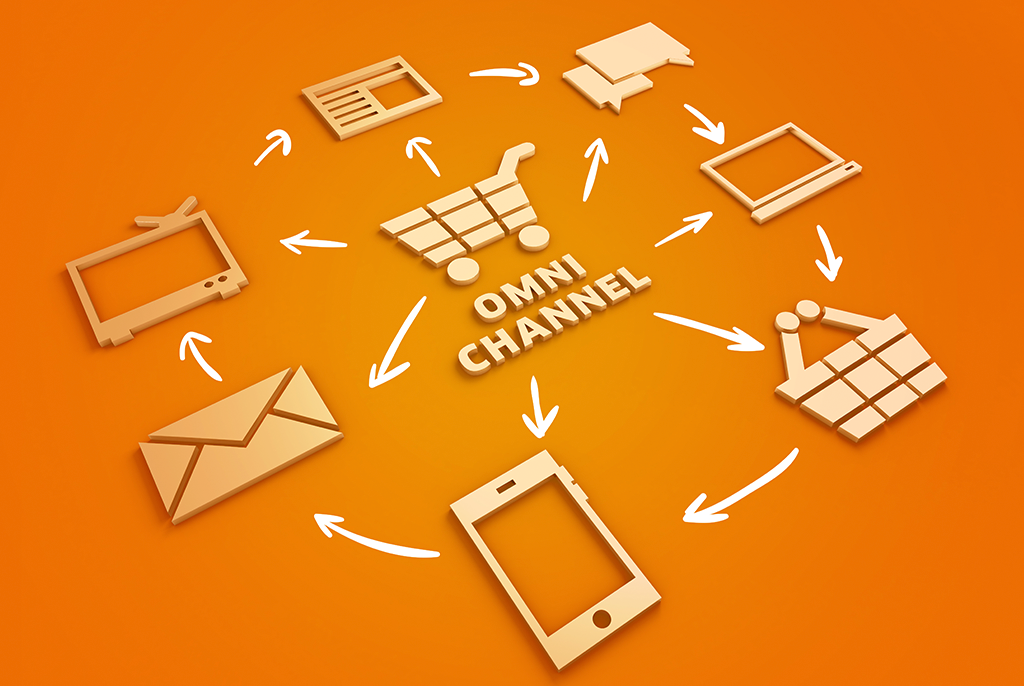7 tips for building an omnichannel strategy

Within our strategy practice we have a front row seat to a fundamental shift occurring in the U.S. economy, as traditional businesses give way to e-commerce. E-commerce is expected to grow by a whopping 20% in 2018… again.
It is not just retailers who should take notice; the omnichannel revolution will ripple through the supply chain. If one needs validation, just consider the speed in which brick-and-mortar stores are evaporating. According to The Wall Street Journal, a staggering 8,600 retail stores will close in 2018.[i] Westfield’s announced divesture of 34 of the nation’s leading mall properties feels like a nail in the coffin.
This story is all too familiar. Macy’s and Kohl’s are struggling.[ii] Walgreens snatched up Rite Aid, Bass Pro Shops purchased Cabela’s. Some of these mergers feel like two people who don’t know how to swim grabbing for one another in the deep end.
It doesn’t have to be that way. Today, the most successful marketers are leveraging omnichannel strategies to level the playing field. Masters of omnichannel meld physical and digital into a seamless experience, combining brick-and-mortar with web, social media and mobile to enrich the experience. They merge the in-store and online experiences into one. Amazon has already created a store with no checkout stands, and a slick interface that charges cell phones.[iii] See the video on Amazon Go.
Amazon’s acquisition of Whole Foods sent shockwaves through retail, and with good reason; Amazon is the innovator in a sea of sameness. It reads like an old-fashioned thriller, and Amazon is a convenient villain. However, it’s overly simplistic to say brick-and-mortar is being replaced by e-commerce.
While all these companies are talking about omni-channel, few have actually embraced it to the extent that they are creating any real competitive advantage. A recent IDC study found that on average, omnichannel customers carry a 30% higher lifetime value.[iv] According to the Harvard Business Review, 73% of shoppers are using more than one channel.[v] These strategies extend beyond traditional retail, and to any company that distributes goods. Vistage members also have the opportunity to provide services within this eco-system.
Today, shoppers are caring less about material possessions and are gravitating toward “places to be.” For example, Restoration Hardware has created an “everything under one roof” store in West Palm Beach where shoppers can drink coffee while sitting in the furniture they would buy.[vi] Retail centers are being completely transformed into experience centers. Shopping centers will also feature more experiential gyms, as malls welcome more foot traffic and higher-educated consumers.[vii]
Here are seven tips to focus on in building an omni-channel strategy:
- Create a strategic plan that lays out your strategy. Disney provides an example of a company that has reframed its offer to connect vast entertainment assets (including parks and movies) with an online experience. Companies need to be built from the ground up to support multiple profit and cost centers (Kohl’s cited higher-than-expected shipping costs as impacting its bottom line this year).[viii]
- Identify stakeholders. Everyone from executive management to IT must be in sync to provide end-to-end solutions. Retailers are expanding their reach through strategic alliances. Macy’s has added store-within-a-store partners such as Lens Crafters in order to deepen its value proposition (if you can’t beat ’em, join ’em).
- Engage your staff in the experience. For example, California-based retailer Lamps Plus installed kiosks in its stores and pays salespeople for online sales to create incentive for them to embrace e-commerce.[ix] Avoid promoting a division within your company that puts people and channels at opposition with each other.
- Understand the timing and sequence of your customers. Crate and Barrel provides an app that allows consumers to “pick up where they left off” within the online registry and other interactions.[x] Look for ways to make your customers’ experiences more seamless by connecting back to their previous interaction with you.
- Find ways to merge physical and digital assets. From Timberland’s “touch walls” to Neiman Marcus’s use of geo-tracking tools, retailers are leveraging the latest technologies to engage consumers. It won’t be long before augmented reality (AR) makes its leap into a store near you. Search for ways to embed technology along your customers’ journey.
- Maintain emotional connectivity with the audience. Glade created a Museum of Feelings in New York City to reinforce the power of scent. Illuminated halos of lights and clouds created an emotional response. The museum yielded more than a billion media impressions.[xi] Even the stodgiest brands can find ways to connect and create experiences that are truly immersive and viral.
It’s time for providers to pinpoint their omnichannel strategies and technologies before they are left in the dust.
[i] What to Do with Dead Malls, The Wall Street Journal[ii] Macy’s Sales Decline for the 10th Straight Quarter by Phil Wahba, Fortune
[iii] Amazon.com: Amazon Go
[iv] IDC PlanScape: Digital Transformation of Omnichannel Commerce for Retail, June 2017
[v] A Study of 46,000 Shoppers Shows That Omnichannel Retailing Works by Sopadjieva, Dholakia & Benjamin
[vi] Restoration Hardware Celebrates the Opening of Its West Palm Beach Store, Forbes
[vii] Malls Never Wanted Gyms. Now They Court Them by Rachel Bachman, The Wall Street Journal
[viii] Kohl’s Faces the Challenges of Omnichannel Retailing, Fox Business
[ix] Retail Kiosks Served by IBM System i Brighten Sales Picture, BCD Software
[x] 5 Excellent Examples of Omnichannel Retailing Done Right by Jason Trout, Multichannel Merchant
[xi] Museum of Feelings: Ogilvy Agency, welovead.com
Category : Customer Engagement
Tags: Online Marketing
